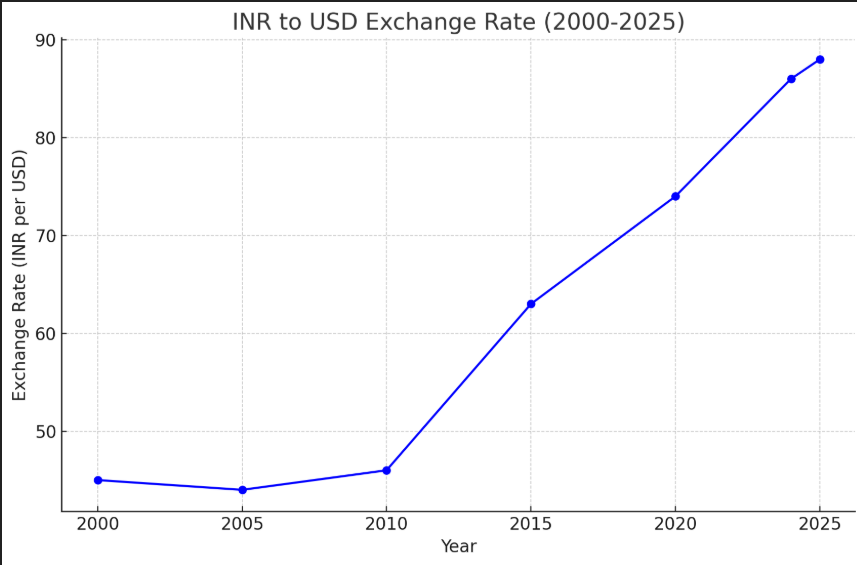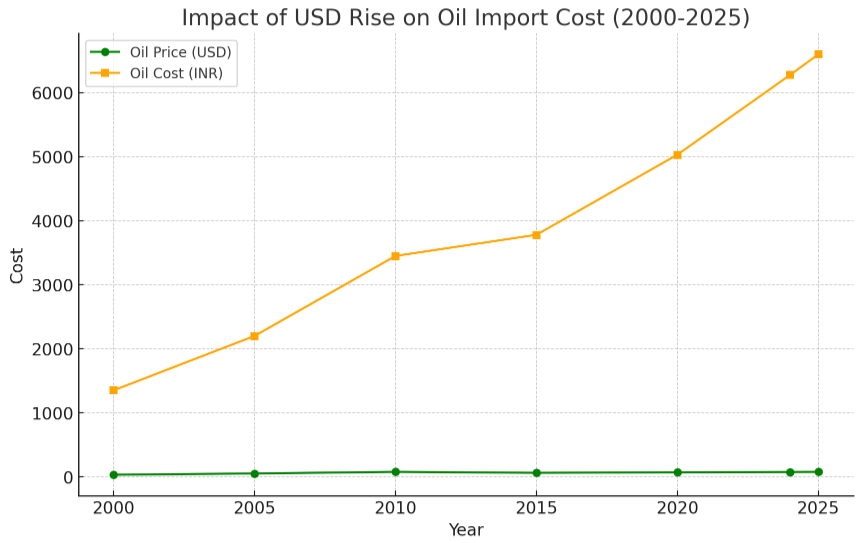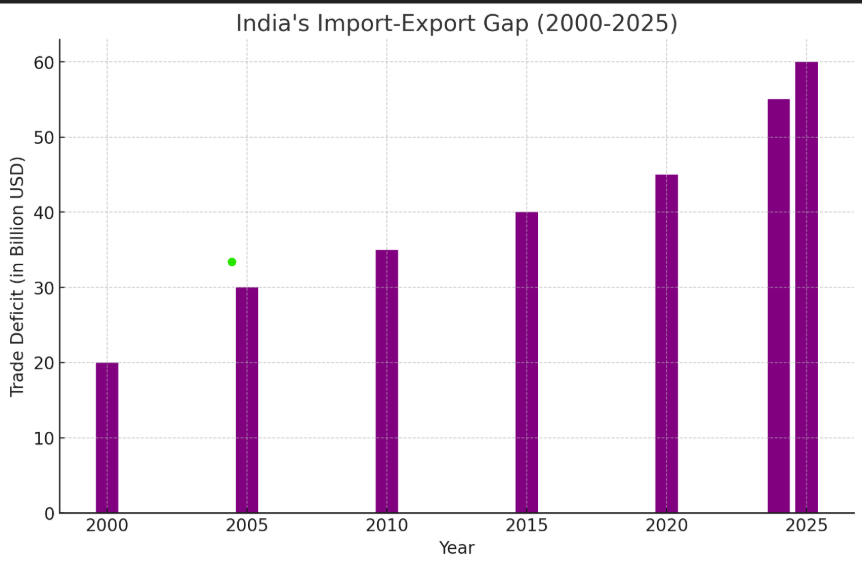
Introduction
The drop in the value of the Indian Rupee falling against Dollar has become a real worry for both investors and policy-makers, touching every part of our economy and everyday life. The Indian rupee falling against the US dollar is a growing concern due to Currency value affects the global economy in many sectors and many ways. Recently, the Indian rupee (INR) lost its value against the US dollar (USD).
This value drop is crucial for investors, government decision-makers, and regular people because it can lead to inflation and financial challenges. In this article, we’ll list the reasons why the Indian rupee is losing its value, what is on India’s economy, and what can be the ways that can be implemented to control or fix the situation.
Understanding Currency Valuation: Why the Indian Rupee Falling Against Dollar Matters
How is the value of a currency decided?
A currency’s value is dependent on the dynamics of supply and demand. When a currency’s demand increases, then supply, and its value rise; now when the supply increases, then the demand, its value decreases. This depends on many things, like trading, interest rates, inflation, and how strong a country’s economy is.
The INR-USD Exchange Rates Over the Years

If we talk about its value over the years, then the rupee has been losing its value slowly over the years. In the 2000s, 1 US Dollar (USD) was around 45 Indian Rupees (INR). Now it’s about 86 INR. This decrement in the Indian currency shows an ongoing problem in India’s economy and other factors affecting it.
The Impact of the Indian Rupee Falling Against Dollar on Daily Life
India Imports a Large Amount of Oil

India brings nearly 85% of its oil from other countries. Now exactly what happens is that whenever oil prices increase, India has to pay more in US dollars. For example, early on they were paying 80 INR for 1 USD and were purchasing oil for 73 USD; now they have to pay 86 INR for 1 USD. In this way, India is paying 200-250 INR more for the same amount of oil. As the demand for USD increases, it weakens the INR.
Improper Balance Between Imports and Exports

India purchases or buys more goods and supplies from other countries than it sells and because of this trade gap, it will require more USD, which directly or indirectly reduces the rupee’s value.
Impact of US Federal Reserve Policies
When the US Federal increases the interest rates, investors from around the world or globe transfer their money to the US to get better returns. This makes the USD stronger and the INR much weaker.
Foreign Institutional Investor (FII) Pulling Out
The foreign investors have been taking money out of the Indian market due to insecurities of the policies and global worries; they opt elsewhere for a better return. It leads to a decrease in demand for the rupee.
Political Tension and Global Issues
Different types of conflicts and uncertainties in the world or a particular country make investors choose safer currencies like the USD. This does not directly lead to a decrement in the INR, but it puts more pressure on the INR
Long-Term Economic Issues
As we all know, India is still developing, which leads to slow reforms, infrastructure issues, and many more that a fully developed nation won’t face. These make the foreign investors cautious and keep the Indian rupee weak.
How Weakening INR Affects the Indian Economy
Increment in Prices
When the price of INR falls, importing goods like oil and electronics becomes costlier. This leads to overall price hikes or inflation to cover the margin.
Expensive Households
Increased prices of items due to the weaker INR have a huge impact on the budgets of middle-class families. Increasing the price of everyday items like cooking oil, electronic items, and medicines. It highly affects the family budget.
Business Challenges
Companies that rely mostly on imported raw materials & machinery may see a hike in the price or cost of operation. Profit margins decrease, eventually forcing companies to sell at higher costs to customers or accept lower profits from their business.
Tight Budget for Government
A currency that is steadily decreasing makes things super expensive, like fuel and fertilizer, more expensive for the government, which means they will get a smaller amount of money to spend on development work.
Government and RBI Strategies for Tackling the Indian Rupee Falling Against Dollar
Impact of RBI Currency Market
The Reserve Bank of India (RBI) sells the US dollars from its reserves to stop the rupee from falling too fast and probably make it stop for a short period. Encouragement for Exports To increase the flow of incoming dollars to the country. The government gives rewards and different types of benefits to the exporters and makes it easier for them to sell goods abroad.
The Reserve Bank of India (RBI) frequently intervenes in currency markets to slow the rupee’s fall and control inflation.
Attract Foreign Investments
Under this scheme, India tries to attract foreign companies to invest in the country by offering benefits and keeping the rules simpler. This will help to increase the USD supply from foreign investors.
Supporting Local Manufacturing
The “Make in India “ campaign encourages local businesspersons and workers to increase the production of the things we currently have to export so that India imports less. So this will help to balance the trade and strengthen the INR. Impact on the Future and Strategies that Can Be Implemented
Expert’s Prediction and Insights
According to the experts, the rupee will stay under a lot of pressure and decrease steadily because of global economic risks and oil prices. India needs to change the system try to fix the internal issues and impose strong policies.
Investment Strategies
Investors should try to invest in sectors likely to remain unaffected even if currency value changes. Invest in industries that benefit when the rupee falls, like IT and pharma. These sectors earn in USD and do well during currency decreases.
If you’re exploring economic trends, you may also be interested in how to invest in electric vehicles in India, a sector attracting foreign interest and promising returns amid currency shifts.
Government’s Role
The government should try to enforce the policies that would be beneficial for building better infrastructure, how to utilize the money properly and give relief in trade and investment rules to encourage it and make the economy stronger.
Business Strategies
Businesses should buy from local sources and reduce import dependency. Due to this one can manage the currency risk using some tools.
Financial Planning
People should smartly make financial plans like investing in gold, real estate, or FDs. This protects their money from fluctuation in the currency due to weakening.
Conclusion

The rupee’s (INR) decrease against the USD (US Dollars) is because of both the global issues and the internal problems within the country. It leads to rising prices and economic stress. But with good and better policies enforced by the government, businesses, and individuals, India can manage the impact of the decreasing INR and build a strong future.
Learn more about : Digital Arrest Scams in India: A Spreading Threat



